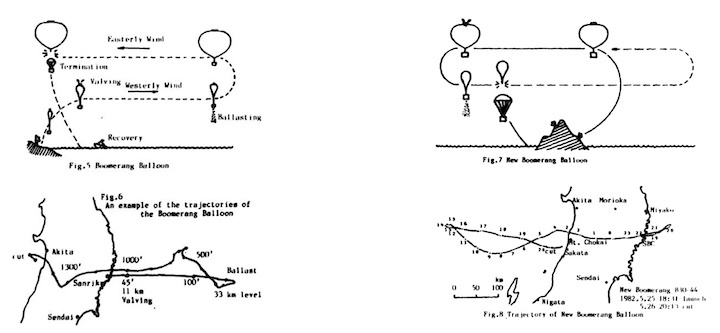
October 17, 1976 Akita Airport, Japan
![]()
The source listed is the MUFON journal number 282 (October 1991).
Source material
One would think the MUFON journal would have a thorough investigation of the sighting. This is not the case and it was just a reprint of a national Enquirer article from 1977:
A brilliant golden UFO hung like a miniature sun in the late morning sky over northern Japan on the 17th, dazzling observers at Akita Airport including a veteran airline pilot and air traffic controllers. The shining disc-shaped craft hovered motionless for five minutes in broad daylight. Newspapers reported that about 50 people saw it. Kenichi Waga, who is a telecommunications officer at Akita Airport’s control tower, was one of the first people to spot the disc at 10:40 a.m.
“It was south of the airport, about five miles away from it. I watched it for about five minutes,” Waga said. “It was disc-shaped, larger than a car, but smaller than an airplane. It was very bright, golden in color, with white lights. I immediately warned all pilots in the area to watch out for the UFO.”
About the same time, Capt. Masara Saito, 34, a Toa Domestic Airlines pilot with 12 years experience, was preparing to take off in a pas- senger jet when he noticed “a strange looking disc shaped object 5000 feet from the ground. It was something I had never seen before. I believe in UFOs now, although I had been very skeptical before.” Tazawa Takumi, an air traffic controller, was on duty at Akita tower when he noticed the object. “I grabbed a pair of binoculars and got a very close look at it. It looked like two plates placed together, with the top one inverted. I wasn’t sure of their existence before, but after what I saw I certainly believe in them now.” A television reporter, Masaki Machida, had been assigned by Akita Broadcasting Co. to do a story on pilot training. “I watched the object descending from the east,” Machida said. After staying in a fixed position for five minutes, the UFO flew off in the direction of the sea. The whole thing was the most incredible experience that ever happened to me on the job.” (The National Enquirer, 1/4/77)2
I could find no other sources of information about this sighting.
Analysis
It appears that what was seen that morning was large and moving slowly. This makes one suspect it might be a research balloon of some kind. The stratospheric database , which is not complete, does not have any balloons launched in the region for this date but
something did catch my eye. The Japan Aerospace Exploration Agency (JAXA) was launching balloons from a location called Sanriku in the Iwate district of Japan. That site was only about 100 miles ESE of Akita airport.4 This made me wonder if balloon activity from this area might have been the source of the sighting.
Looking into the work of Sanriku reveals that had developed an interesting technique of launching their research balloons.5 Since Japan is a narrow island, recovery of materials from long duration flights would be difficult. As a result, the balloon group developed what they called “Boomerang balloons”. These balloons would be launched and moved eastward with the prevailing winds. When the balloon reached the limit of the telemetry, the balloon would drop ballast and rise into the stratosphere, where the prevailing winds would move the balloon towards the west and return the balloon back towards the launch site. When the balloon reached the limits of the western range, the balloon would be directed to vent, lower altitude, and return to an eastern flight direction. This could be repeated. Some flights in the mid-1970s were lasting two to three days and still being recovered on or near the Japanese Islands. In the document, I discovered, there were examples of trajectories from such flights. Both ended up passing just south Akita.
The only problem with this technique is it was confined to two time periods during the year when the winds supported it. That was in the late spring/early summer (May-June) and early to mid-autumn (September-October). Looking at the stratospheric records for Sanriku in the 1970s, balloon activity occurred during those time periods annually. The only exception is the fall of 1976.5 It seems unlikely that JAXA would shut down the balloon launches during optimal conditions and more likely that the records from this time period are not readily available.

Conclusion
Icould not locate the “smoking gun” of the exact balloon flight from this time period but there is enough circumstantial evidence to suggest that what was seen was possibly a balloon launched from Sanriku. The description of the UFO’s trajectory matched the standard trajectory of balloons launched from Sanriku and the characteristics of the sighting are what one would expect from a research balloon. I would list this as possible balloon and remove it from the list.
Quelle: SUNlite 5/2023
